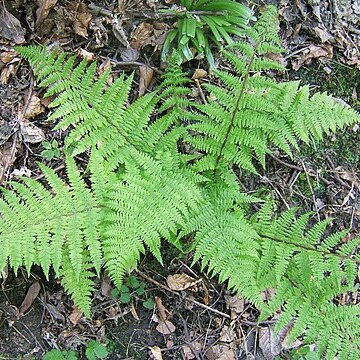Plants generally terrestrial. Stems short-creeping or ascending, stolons absent. Leaves monomorphic, usually dying back in winter. Petiole ± 0.5 times length of blade or less, base swollen and dentate, persisting as trophopod over winter or not; vascular bundles 2, lateral, lunate in cross section. Blade lanceolate to elliptic or oblanceolate, 1--3-pinnate-pinnatifid, gradually reduced distally to confluent, pinnatifid apex, herbaceous. Pinnae not articulate to rachis, segment margins serrulate or crenate; proximal pinnae often reduced, sessile to short-petiolulate, ± equilateral; costae adaxially grooved, grooves continuous from rachis to costae to costules; indument absent or of linear to lanceolate scales or 1-celled glands abaxially. Veins free, simple or forked. Sori in 1 row between midrib and margin, round to elongate, straight or hooked at distal end, or horseshoe-shaped; indusia shaped like sori, persistent, attached laterally or with narrow sinus, or indusia absent. Spores brownish, rugose. x = 40.
Sori dorsal; indusium us. elongate and curved across veinlet at distal end of sorus, or interrupted at distal end and produced on both sides of veinlet. Sporangia with slender stalks; annulus incomplete, vertical; spores bilateral. Rhizome dictyostelic, us. erect, sts creeping. Stipes with 2 vascular strands us. uniting above. Fronds us. large and decompound, veins rarely anastomosing. In a wide sense a genus of some 600 widely distributed spp., by some split into a number of genera.
Terrestrial ferns. Rhizomes erect to long-creeping, scaly. Fronds 1-3-pinnate, scaly at least on stipes; veins free. Sori round or usually elongate, on one side of a vein, sometimes also developed distally on the second side. Indusia reniform, elongate or hook-shaped, attached laterally, opening towards midrib. Spores monolete.
Double sori (at least some of them) connected at their distal ends; usually some reniform and J-shaped sori present

